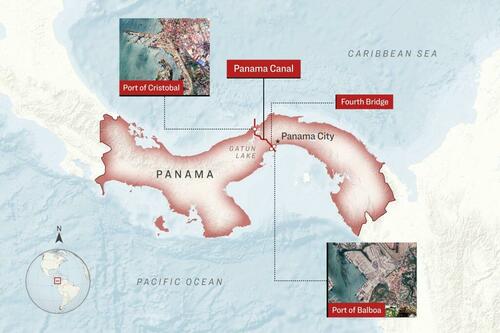NIH Director Details Crackdown on Fees Monopoly Publishers Charge

In an exclusive interview with The DisInformation Chronicle, National Institutes of Health Director Jay Bhattacharya explains his latest policy to control monopoly science publishers now raking in hundreds of millions of dollars from taxpayers, while sometimes playing partisan politics and pushing fake narratives. The NIH announced yesterday that they will soon cap the “article processing fees” that publishers can charge NIH-funded researchers to make their studies public and available to American taxpayers.
NIH funds much of the planet’s biomedical science, but this research has remained locked up by pricey science journals that charge Americans expensive fees to read the results of the very studies they funded. The publishers of Science Magazine, for example, demand $30 to read a single study.
However, this changed recently when Dr. Bhattacharya demanded that journals make NIH-funded studies public as soon as they publish them. However, taxpayers are still on the hook, paying the “open access fee” that journals charge scientists.
In the case of the esteemed Nature Magazine, this means a $12,600 fee. Of course, scientists don’t have thousands of dollars lying around for publishing fees, so NIH-funded researchers simply charge that cost back to the American taxpayer as part of their NIH grants. In effect, taxpayers get charged twice: first when they fund an NIH grant for a university professor, and second when they pay that professor’s publishing fee to a science journal.
And this money quickly adds up.
The six largest science publishers charge researchers $1.8 billion in publishing fees every year, with American taxpayers soaking up a large portion of that money. NIH’s latest policy will control these costs in the future, ensuring more NIH money goes to scientists and their research.
Dr. Bhattacharya spoke with me about the exorbitant costs researchers pay these monopoly publishers to get their studies out in the public, as well as the blatant games publishers play to promote partisan agendas that corrupt public discourse.
“You would expect that the top science journals in the world would have news organs that respected the truth,” Bhattacharya says. “But unfortunately, both Nature and Science have science writers who report propaganda and often rumors.”
We also discuss a corrupt study Nature Medicine published called “Proximal Origin” that the Department of Justice is now looking into, as well as prejudicial and unprofessional statements Science Magazine editor Holden Thorp made during the pandemic. Thorp’s response appears at the interview’s end.
This interview has been condensed and edited for brevity and clarity.
THACKER: You guys recently released, or you sped up this requirement that all NIH-funded research must be made public when published. Why were we ever allowing journals to keep public-funded studies locked up as proprietary research?
BHATTACHARYA: It never made sense for the government to be paying for research that wasn’t available to the public. My predecessor at the NIH, Monica Bertagnolli, instituted a program that…The NIH put a requirement on their funded researchers to only publish in journals that allowed the public access to the articles for free. For reasons I will never understand, that policy was seen as controversial.
Primarily, I think, because the journal industry is a big business. In fact, it’s almost a monopoly power. Those interests had a big role in creating controversy over something that should have been obvious. Americans should have the right to read the articles that their taxpayer dollars fund.
This policy by Bertagnolli was going to go into effect in December, and what I did is I sped up the timeline to the beginning of July. We finally have a rational system where if the taxpayers pay for research it is available to American taxpayers for free, immediately upon publication.
THACKER: So what is this newest policy doing?
BHATTACHARYA: What I’ve seen happen over the past few years is that, as journals adopted an open access policy, they’ve started charging authors more and more money for the right to publish in their journals. So, if an author wanted the paper that they wrote, funded by taxpayer money, available to the public for free, the journal would charge the author a lot of money—typically on the order of $2,000. But some journals charge $3,000-$4,000 or $5,000.
There’s even journals that charge up to $17,000 for a single article to be published with open access. And these aren’t fly-by-night journals. Some of the most prominent, high-impact journals in the world charge authors a tremendous amount of money, and the author pays it because the NIH requires that the article be made available for free. And the journals essentially abuse their monopoly power over the scientists.
Scientists need the journals to get recognition for their work, promotions, and tenure. Well, scientists don’t generally have this kind of cash lying around, so they charge the open access fee that the journal charges them, back to the American taxpayer.
THACKER: So the taxpayer pays for the research, and then they pay the journals to make the research open access. Taxpayers pay twice.
Let me run one example past you. If a researcher wants to publish their study in Nature, they have to pay $12,690.00, something that Nature calls an “article processing charge.” Nature is the most prestigious journal in the world, based on impact factor, and Springer Nature publishes about 700 other journals, where fees run from around $1,500 to $7,000. How did we end up with this model, and what does this do to research costs?
BHATTACHARYA: We ended up with this model because essentially…Big publishers—Springer Nature, Elsevier—have effective monopoly power. There are some small publishers available, but the bulk of scientific publishing is controlled by a very small number of companies. And they’ve found a way to double-charge American taxpayers.
We say it’s an “article publishing fee,” which is crazy because it doesn’t actually cost the journal very much money to publish. There’s no longer the marginal cost of paper, whatever that is. Essentially, they’re just putting it out there on the internet. Most of the journals don’t pay scientific reviewers, who essentially work for free.
The authors are paying the journals for the right to have their papers published. And journals often pay their editors very little also. So what exact service is being provided? It’s far from clear for that $12,600 you mentioned….that’s exorbitant, and it’s only possible because you have effective monopoly power over scientific publishing by a few entities like Springer Nature.
THACKER There’s been some articles and discussion about how scientists from poor countries don’t have money to pay for these fees. Do you know of examples where researchers have chosen journals based upon the publication cost? Where a decision was made, “We’ll publish here because they charge less.”
BHATTACHARYA: I’ve done that where I had a paper that was accepted by a journal and I didn’t realize that there was a publishing fee involved. This paper was not supported by a grant, it was self-funded. And I decided to not publish at that journal because they were charging me an exorbitant fee.
And if you are a researcher in a poor country where you don’t have access to a lot of funds for your research, it really does slow up the ability for researchers in those parts of the world to publish. Now some of these journals have policies where they will charge less for scientists who work in poorer countries.
But any charge at all needs to be justified by some benefit to the public. But in the example of Nature, you have charges that are not in any way justifiable.
$12,600? For what?
THACKER: Mark Zuckerberg’s foundation stopped allowing researchers to use their grants to pay for publishing fees back in 2017. Bill Gates stopped allowing his grantees to use their funding to pay publishing fees earlier this year. Why did it take the federal government so long to do what billionaires thought was in their own best financial interest?
BHATTACHARYA It’s hard for me to know exactly what the delay was. When Monica Bertagnolli put in place this policy that NIH research would be open access and free to the public, that itself was seen as a controversial move.
So the next step is to limit the amount that the federal government is willing to pay for these open access fees. The journals are just a pass-through.
A lot of people think that if you have something published in a high-impact journal, or a famous journal with peer review, that automatically guarantees that the result is good. That the results are replicated, checked, and certainly true. In fact, we know that that isn’t the case.
There’s a large literature starting decades ago documenting that much of the published scientific literature, including studies in the top scientific journals in biomedicine, are not replicable. There’s no guarantee just because it’s published in Nature that the research is true.
THACKER: I actually wrote an op-ed once for the Washington Post about several examples where peer review had failed and had stopped people from publishing stuff that we know was good because the research went on to win major awards for it. Nobel Prize winning research that had been rejected.
Peer review can be gamed.
BHATTACHARYA: And then you have the flip side, which is published work in high-impact journals that turns out to be false. Probably the most prominent recent example, is the Surgisphere scandal.
The Lancet and New England Journal both published high-profile pieces with authors that were using a supposedly large database of health records to demonstrate that hydroxychloroquine was dangerous for Covid. But it turns out that those researchers were using a fraudulent database.
Two very high-profile medical journals published these pieces after going through peer review.
I don’t want to paint too negative a picture. It is true also that these journals publish excellent science. But simply the fact that research is published in a high-profile journal does not mean that the result is correct. Still needs checking. Even if it’s gone through peer review. Independent replication is what gives you confidence that results are true.
THACKER: Researchers estimated that scientists paid $1.06 billion from 2015–2018 to the five largest commercial publishers: Elsevier, Sage, Springer Nature, Taylor & Francis, and Wiley. A follow up study estimated that researchers paid $8.97 billion to the biggest publishers from 2019 and 2023. What is all this money for?
BHATTACHARYA: Largely the profits of the monopoly publishers. The open access fees, at that level, are unjustifiable.
THACKER: Just to find these numbers, I had to dig around a bit, because nobody reported this research. I couldn’t find any media outlets covering this research on publication costs, except El Pais, a newspaper in Spain. Why do you think science writers ignore this research showing these crazy costs?
BHATTACHARYA: It’s interesting, some of the most prominent science writers—these scicomm writers—they write for organizations that are monopolist publishers. For instance, Nature and Science both have science reporters who work for them. They often set the agenda for what other science reporters report.
Just think about this, for a moment. They have a very clear conflict of interest. They will act to protect the interests of their employers. Sometimes they’ll tell you that they have editorial independence…. Well, frankly, I don’t believe that.
Why don’t they report on this? That’s a really good question. If they have an economic interest not to report that, I think that’s a sufficient explanation.
THACKER: If you publish a study in Science Magazine they allow you hand out and distribute copies if you are funded by the Bill & Melinda Gates Foundation, Wellcome Trust, the Charity Open Access Fund, and the UK Research and Innovation council. Why didn’t the NIH seek similar rights for studies funded by American taxpayers?
BHATTACHARYA: That’s a really good question. Part of the answer is just making the articles open access immediately upon publication was seen as controversial. But if research funded by private foundations can be given this special treatment—which really should be normal treatment—by these monopoly publishers, there’s no reason that research funded by American taxpayers should also not received similar treatment.
THACKER: I want to talk about a very infamous paper that Nature Medicine published called “Proximal Origin.” This paper was used to argue that it was a “conspiracy theory” to say that a lab accident in Wuhan could have caused the pandemic and it’s the most cited paper for all of 2020. We then find out that the authors were running drafts past Tony Fauci and thanking him for advice and leadership, and the NIH then used that paper to promote the claim that NIH funding couldn’t have caused the pandemic. House Democrats released a report with emails arguing that Jeremy Farrar, then at the Wellcome Trust now at the WHO, should have been named as an author.
The paper is obviously corrupt. There is a petition with thousands of signatures calling for it to be retracted, but Nature has done nothing to fix the paper’s fake disclosure and failure to note Farrar’s documented involvement. How can the public trust these journals?
BHATTACHARYA: I mean, it’s really tough to trust journals like that when they behave in ways that are so obviously against the evidence and where they have a financial interest in keeping it that way, right? That Proximal Origin paper was published very early in the pandemic and somehow concluded on the basis of very, very flimsy if any evidence that it was very unlikely that the virus was the result of a lab leak. Essentially taking the Chinese at their word, saying it must have been a wet market event that led to the pandemic.
Springer Nature has a tremendous investment and interest in the Chinese scientific establishment.
THACKER: Right, so let’s go into that. Reporter Ian Birrell wrote for UnHerd back in 2021 about several questionable pieces by Springer Nature publications, including studies in Nature and the Nature Medicine “Proximal Origin” paper. All these papers pointed away from possible Chinese government complicity in a Wuhan lab accident. And Birrell uncovered very tight financial ties between Springer Nature and the Chinese government:
One source estimated that 49 sponsorship agreements between Springer Nature and Chinese institutions were worth at least $10m last year. These deals cover the publishing fees authors would normally pay in such journals, so they smooth the path for Chinese authors while creating a dependency culture. They have worked well for both sides: they offer the publishers access to the surging Chinese market and its well-resourced universities, while offering international recognition and status in return. But we know President Xi Jinping demands compliance with his world view, even from foreign-owned companies — and especially on an issue as sensitive as his nation’s possible role in unleashing a global catastrophe.
By the way, Springer Nature also publishes Scientific American which led a campaign denouncing a possible lab accident. Why do think the media has ignored these financial ties?
BHATTACHARYA: I mean, the conflict of interest there is obvious. And the unfortunate thing is that the scicomm writers who work for Springer Nature often set the agenda and narrative that other science reporters follow. You have, essentially, a situation where there’s very little interest for scientific writers to report on these kinds of things because they have a conflict of interest, based on who they work for.
THACKER: Sources inside the HHS have told me they are looking into Chinese Communist Party’s (CCP) influence on US science agencies and universities. A Congressional committee sent Harvard a letter demanding they explain their ties to the CCP. What are your concerns here?
BHATTACHARYA: I think it’s deeply concerning. I think we have to understand… I don’t want to paint with too broad a brush. There are many great scientists who work in China who I think are very likely fine. And many Chinese post-docs and other scientists work in the United States.
But we are in a competition with the Chinese establishment for the preeminent position of biomedical sciences in the 21st century. And so we have to think carefully and strategically about our links with the Chinese government.
THACKER: We had these exact same concerns with the Soviet Union, but no one screamed, “You’re being racist against the Russians!” Why is this being thrown around as a new type of “racism?” It’s very well documented that the Chinese government is interested in the Chinese government and not in America. It’s no secret.
BHATTACHARYA: I don’t think it has anything to do with racism. Scicomm writers often use that canard as a way to silence criticism. I still think about the New York Times reporter who put out a tweet saying that if you thought that a lab leak was a possibility for the origin of the pandemic, you’re being racist.
How is it racist to think that it might have been a lab leak? You have an advanced scientific lab in Wuhan where they’re doing work that can manipulate the genomes of a virus and potentially cause a pandemic. That’s somehow racist? But placing blame on exotic practices about what foods you eat in these wet markets is somehow not racist?
The whole thing makes no sense, but the only reason that canard is thrown around is to silence debate.
THACKER” I broke an exclusive on the DOJ initial inquiry into the Nature Medicine “Proximal Origin” paper, reporting that the lead author, Kristian Andersen, is now trying to flee America to get a job in Norway. Can you comment on what is happening inside the federal government or the DOJ on investigating this corrupt paper?
BHATTACHARYA: I have read with tremendous interest your reporting on this topic, but I can’t comment on any ongoing investigations.
THACKER Science Magazine has also published corrupt studies that argue the pandemic started in a market in Wuhan, and a lab accident is not possible. There have been calls for these papers to be retracted. What is going on at these journals publishing obviously corrupt studies?
BHATTACHARYA: The people that control the journals, in particular the editors, often have an interest in promoting a narrative. Take the editor of Science Magazine, Holden Thorpe, right? Based on emails that became public, we now know that during the pandemic, he had a very strong personal interest in supporting Tony Fauci’s ideas about how to best manage the pandemic.
At one point, he attacked me, Martin Kulldorff, and Sunetra Gupta for having published the Great Barrington Declaration, saying that Martin Luther King would have somehow disliked it.

I don’t know how he would know such a thing.
THACKER: Maybe he’s a medium who talks to ghosts.
[I sent questions to Science Magazine’s Holden Thorp about his statement on the Great Barrington Declaration. Thorp’s response appears at the end of the interview]
BHATTACHARYA: The lockdowns harmed the poor, and the working class, and children in tremendous ways that are still ongoing. So why is the editor of the most important scientific journal in the United States, Science Magazine, acting in such incurious ways, using the name of Martin Luther King to silence debate?
That’s a question you should ask him.
THACKER: You’ve dealt with false information published by scicomm writers at Nature and Science. Both outlets published false stories about NIH funding, and Science Magazine deliberately distorted what you said in an interview. How are you dealing with this kind of propaganda coming out of these media outlets?
BHATTACHARYA: It’s very frustrating because you would expect that the top science journals in the world would have news organs that respected the truth. But unfortunately, both Nature and Science have science writers who report propaganda and often rumors.
They are amplifying falsehoods in order to create a narrative that Bobby Kennedy or President Trump are somehow anti-science. Just to give you an example of this, right? In the Science interview you mentioned, the reporter asserted that I was interested somehow in ending all foreign collaborations. That could not be further from the truth. What I was considering at the time was a policy of how to make foreign collaborations safer so that we don’t have a repeat of the Wuhan situation where the NIH funds a lab in a foreign country, and that lab—even though we fund it—won’t share the data from the research that we fund with the NIH.
I was working on a policy to make it so that we could audit the funds that go to those institutions, so that that we can have foreign collaborations in a more secure way.
Nature and Science reported it as if I was trying to end all foreign collaborations. That was a simple lie. And it’s quite frustrating.
I’ll give you another example. The president’s science advisor, Michael Kratzios, put out a fantastic document supporting and fleshing out the President’s call for gold standard science. With the items like replicability, unbiased review—a whole host of vanilla and apple pie kinds of things that basically every scientist would agree constitute excellent science.
A lot of the science press essentially said, “Well, we like these principles, but we don’t believe and we don’t like it, simply because it’s President Trump’s science advisor who put it out.”
This has nothing to do with reason or analysis; it’s just simple prejudice.
I think that goes a long way in explaining how these scientific news organizations have behaved, as well as the financial interests we talked about earlier. I think it was Nature that endorsed Joe Biden twice. And it was the first time in their history they ever endorsed a political figure.
THACKER: I believe that was actually Scientific American under Laura Helmuth, which is a Springer Nature publication. Helmuth got a lot of media attention for herself over that political stunt.
BHATTACHARYA: Yes, but I think Nature did also.
In any case, these are very obviously partisan political organizations rather than simple scientific organizations. They rely on their long history of publishing excellent science as a fig leaf for the raw, partisan politics that they’re trying to play. It’s very unfortunate, because science is not a partisan activity. Science is an activity that both parties … in fact, all of humanity has an interest in science.
And it would be really nice if they would stop doing politics.
THACKER: My last question is about Holden Thorp, whose name you brought up. As editor-in-chief of Science Magazine he spread false information throughout the pandemic, attacking researchers and politicians pointing to a possible Wuhan lab accident as a genesis for the pandemic. He’s also written essays to promote pharmaceutical interests and downplay possible harms caused by vaccines. He’s been criticized so heavily, he had to shut down his X account and hide on Bluesky.
Holden Thorp is paid over $700,000 and AAAS’s biggest single funder, from what I can tell, is the United States federal government. Why are taxpayers subsidizing this kind of nonsense?
BHATTACHARYA: Well, just to play the devil’s advocate on this. Science does publish a lot of excellent science. And it’s worth having institutions that highlight and promote excellent science, as they sometimes do.
The problem with Thorp is that during the pandemic, he utterly failed to promote an honest scientific discussion that reflected what the scientific community was actually saying, thinking, and doing regarding lockdowns, regarding lab leaks, or a whole bunch else.
You know, given that that was probably the most important time in history to have scientific journals honestly reflect what scientists are thinking, rather than trying to suppress scientific debate … that is a tremendous failure. It’s hard to understand why AAAS is still allowing it.
RESPONSE FROM SCIENCE MAGAZINE’S HOLDEN THORP:
As you probably saw, when I testified before Brad Wenstrup’s committee in April 2024, I stated that the emotion of the pandemic and the echo chamber of the old Twitter were not a good mix for me. I regret posting a number of tweets that I posted; most of them were thoughts better left in my head. I’m no longer active on X or Bluesky. I have been public about this ever since the hearing, including on Derek Thompson’s podcast here, at the Aspen Ideas Festival here, and in editorials I have written in Science.
I know people will continue to ask me about this, and that’s just the way it goes. Pandemic was a time of a lot of lessons for many.
As for the lockdown, I have also stated that a number of scientists made a mistake weighing public health guidance over other aspects. At the same time, we’ll never know for sure what would have happened if this was played differently. With Jay and his new colleagues in the health side, that may be tested in the future.
UPDATE: Bhattacharya added similar comments in a podcast with Charlie Kirk.
Republished from the author’s Substack
-

Paul D. Thacker is an Investigative Reporter; Former Investigator United States Senate; Former Fellow Safra Ethics Center, Harvard University















